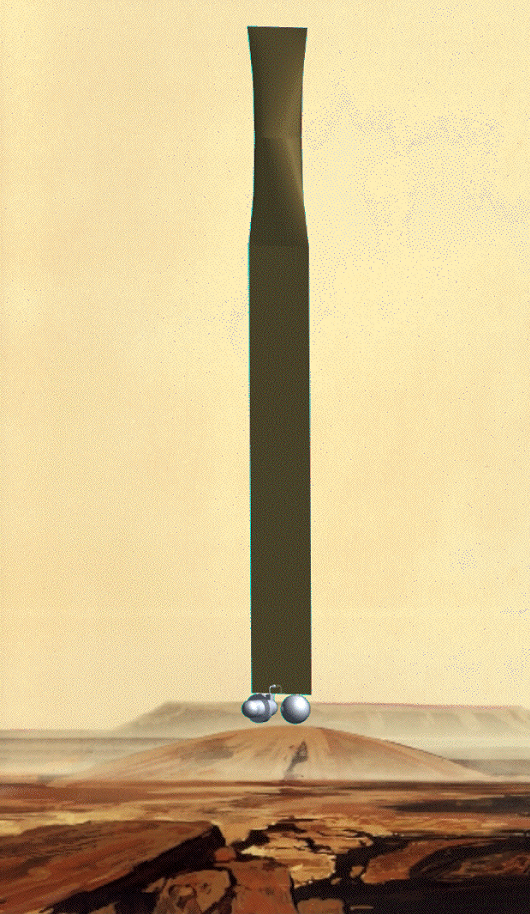Venus Balloons for Near-Surface Exploration
Global Aerospace Corporation (GAC) is developing an innovative concept for a lightweight, metal balloon envelope for Venus near-surface exploration. This balloon is designed to float through the atmosphere and make trips down to the surface. Such a balloon must be strong enough to withstand the stresses of sterilization and packaging before launch, remaining tightly packaged at a low temperature for a long duration during the trip to Venus, and then being forcibly deployed. The balloon material must resist wind shear and the pressure of gas entering the balloon during inflation, not to mention the forces caused by the attached payload. The balloon material must remain intact and functional at temperatures up to 460 deg C, within atmospheric pressures 90 times that of Earth and hot sulfuric acid at concentrations up to 85%, for a year-long mission. The material must be strong enough to hold buoyant gas without leakage. GAC’s lightweight Venus balloon envelope design meets all of these requirements.

Venus Metal Balloon Exploring Venus
The Venus Metal Balloon Envelope concept consists of the following elements:
Metal foils are carefully fabricated into an envelope that can withstand Venus’ harsh environment in addition to forces of deployment and inflation, and forces associated with carrying a payload. This design allows for carrying the buoyant gas while being protected from sulfuric acid corrosion. The metal foils contain corrosion resistant components. In addition, the balloon is attached to the gondola in such a way as to eliminate weak points where corrosion could occur.
Buoyancy control mechanisms and a carefully selected envelope size ensure that the balloon reaches the right altitudes, for example high enough to be carried by zonal winds to specific target areas on Venus, or such that the balloon can take trips to the surface using controlled gas release.
GAC’s metal balloon envelope technology innovation could be used for the Venus In-Situ Explorer (VISE) mission, which was recommended in various past Solar System Exploration Survey reports. VISE aims to add to the understanding of the chemical composition and dynamics of the atmosphere of Venus, and analyze Venus’ surface composition and textures. This knowledge would provide critical information about the present state and history of Venus. The European Space Agency (ESA) Venus Express mission has greatly added to our knowledge of the atmosphere and exosphere of Venus. However, characterization of the noble-gas and isotopes in the lower atmosphere would further expand our knowledge about how the atmosphere formed and evolved, what led to the current climate including the Venus greenhouse effect, and the early tectonic evolution of the planet. While the Soviet Venera and Vega spacecraft gathered data on crustal compositions and textures, they were limited to basaltic lava in lowland areas. Landing in highland areas or older terrains could answer questions related to presence of silicic rock compositions or earlier phases of tectonism, but they present significant technological challenges.
Advances in the technologies included in GAC’s Venus metal balloon concept will address these challenges.